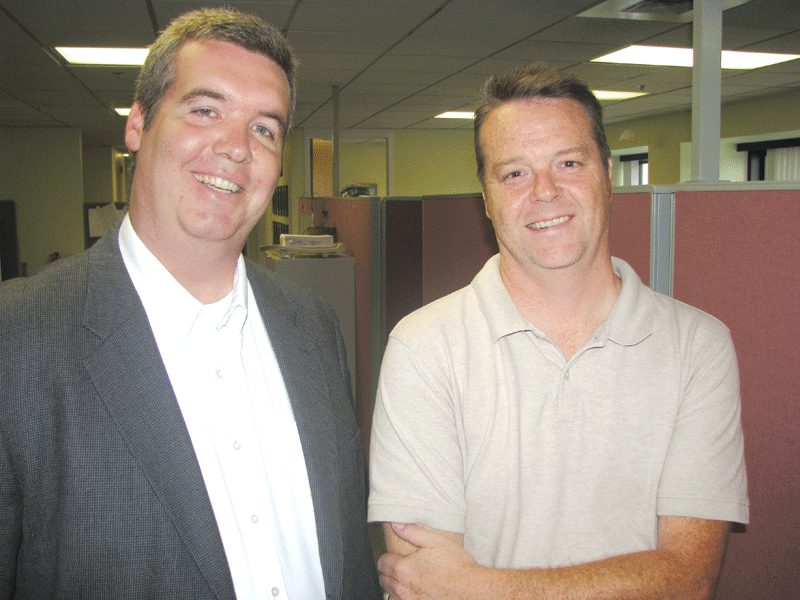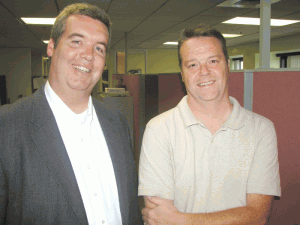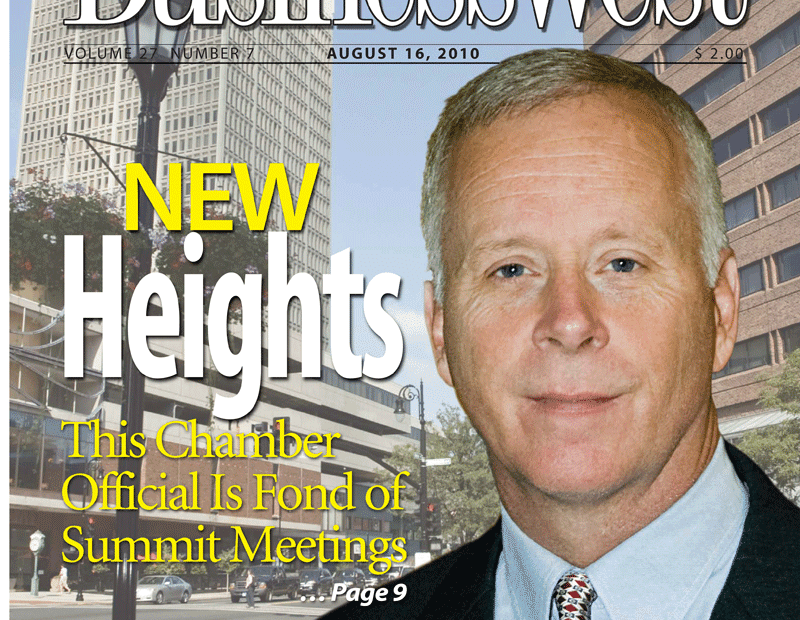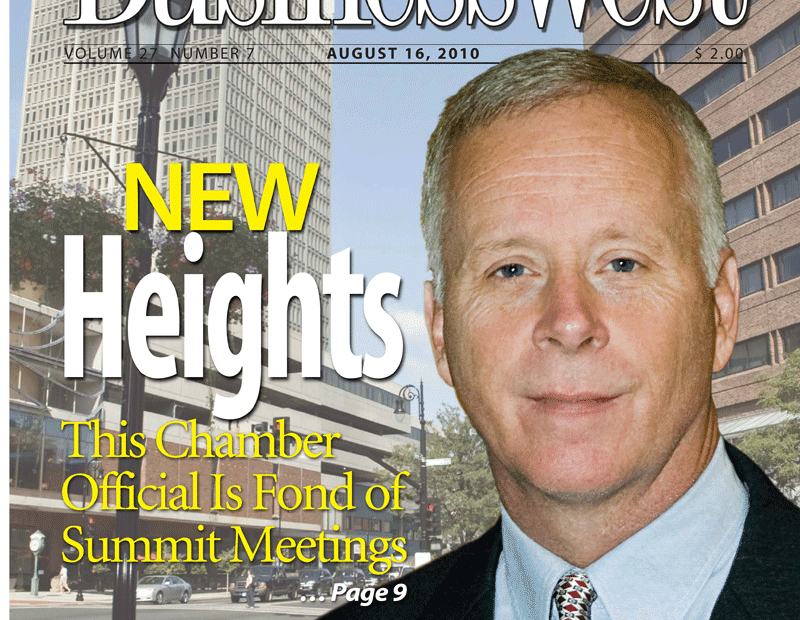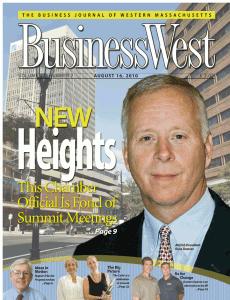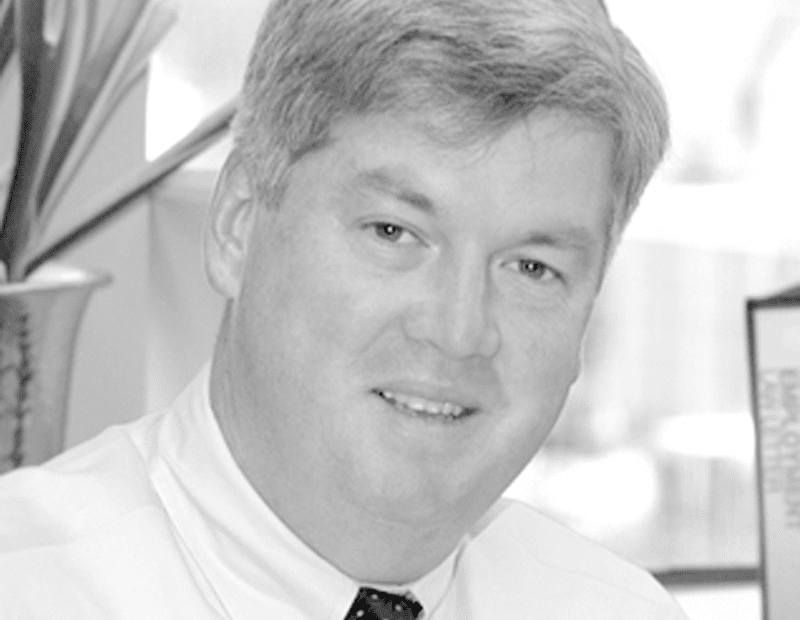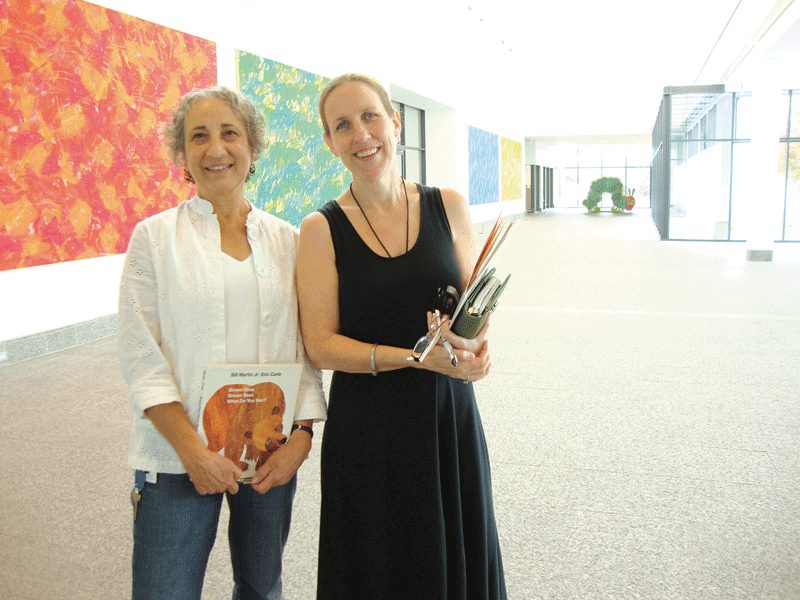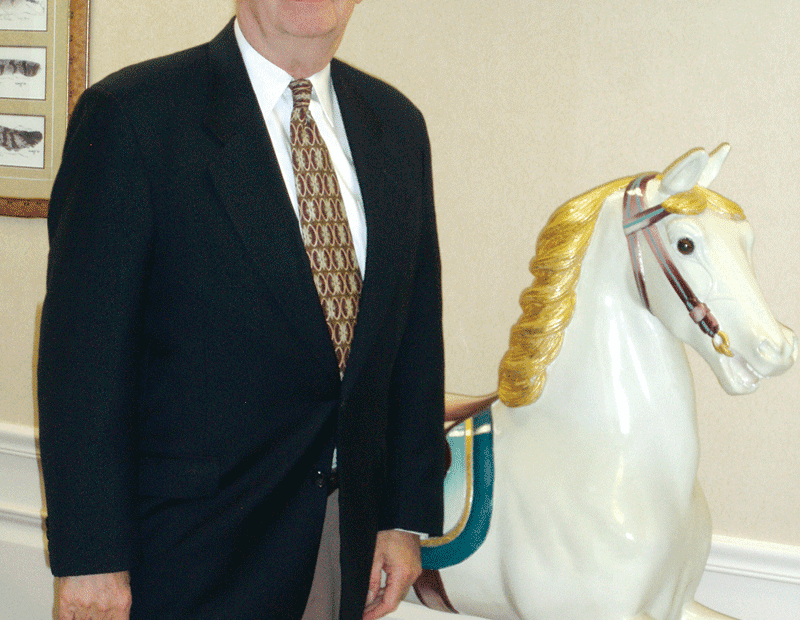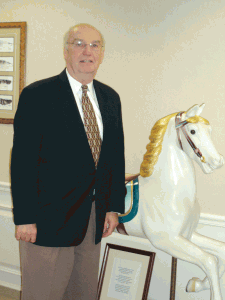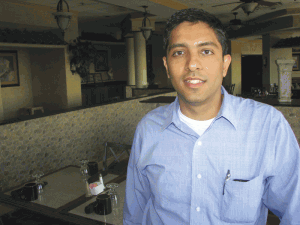The Springfield Public Forum at 75
Launched in 1935 as a pilot program designed to further the education of adults unable to attend college at the height of the Great Depression, the Springfield Public Forum is today one of the oldest lecture series in the country and perhaps the only one that remain free to the public. The list of speakers who have come to Springfield includes hundreds of luminaries, ranging from future presidential contenders Richard Nixon and Hubert Humphrey to Doonesbury creator Gary Trudeau. Through the years, the forum has remained true to its mission while also changing and evolving to remain relevant, reach audiences of all ages, and be a force in the cultural life of the regionPatricia Canavan says those round-number anniversaries, such as the 75th now being marked by the Springfield Public Forum, are much more than occasions for blowing out candles on a cake and marking the passage of time.
Indeed, these are occasions — historically better than other anniversary numbers, such as 74, 76, 49, or 51 — for efforts to draw attention to an organization and remind the public of its value to the community. “And, even more importantly, it’s a time for introspection, for looking at what’s being done and for ways to do it better,” said Canavan, executive director of the forum, noting that those involved with this Western Mass. institution are taking full advantage of this anniversary to do all that and more.
In other words, she said, the 75th will be an occasion to underscore one of the forum’s more effective marketing slogans: ‘Old, but New Every Year.’
Dave Martel, a partner with the Springfield-based law firm Doherty, Wallace, Pillsbury, and Murphy, and a board member for nearly half the forum’s existence, agreed. He told BusinessWest that this year’s forum series, to begin Sept. 21 with a talk from Supreme Court Justice Stephen Breyer, is both a celebration of the institution’s contributions to the community and testimony to how the forum continues to carry out its mission to educate and engage area residents.
He said the 75th anniversary season, while in many ways no different than other years, does, because it is a milestone, present a good opportunity for everything from enlisting additional support from the business community, which underwrites the lectures, to building up an endowment that will someday lessen the forum’s reliance on fund-raising.
“We want to use that endowment to fund one lecture each year, which will put less emphasis on having to find sponsors for each talk,” said Martel, adding that the attention garnered by the 75th anniversary celebration will provide a real boost for those efforts.
Canavan, now in her fourth year at the helm of the forum, said the organization, one of the oldest lecture series in the country and perhaps the only one that remains free to the public, continues to evolve. She used that term first in reference to the fact that the staff, which has grown to four part-time employees, is now paid. But she also utilized it to describe efforts with everything from choosing speakers that will appeal to today’s tech-savvy young people to taking learning opportunities well beyond the one hour of a speaker’s address.
These and other measures are part of a broad strategic planning initiative launched in 2007 and, in many ways, inspired by the diamond anniversary, said Canavan, noting that, overall, the plan’s goal is simply to extend the forum’s reach and enable it to touch more lives.
“We needed to define where we were going and look into the future and decide what we wanted to be,” she said of the strategic initiative. “We are committed to the fact that we are education organization, and while the lectures play a huge part in this, we decided that because we’re bringing such a wealth of resources, people, to a community, to just let them speak for one night and have that be it, is in many ways a waste.”
For this issue, BusinessWest, on the occasion of the forum’s 75th anniversary, takes a broad look at how the lecture series continues to evolve and find new and different ways to remain true to its original mission.
Learning Experience
As she talked about the 75th anniversary and anticipation of it, Canavan said that one more thing the milestone inspired was research into the forum’s creation, history, and legacy. Much of the work was carried out by an intern, and it was quite eye opening, she noted.
Among other things, it revealed that the forum began in 1935 as a three-year project sponsored by the American Association for Adult Education in New York City, which ran similar programs across the country. The first series featured 40 programs over eight weeks, and functioned as a short college course with guest lecturers on related topics, said Canavan, noting that, at the time (the height of the Great Depression), many adults simply did not have the wherewithal to pursue college degrees, and the forum served as a means for continuing their education.
The lectures, which drew nearly 50,000 people that first season, were intentionally historical in nature for the first few years, she continued, but changed at the request of the audience to address topical issues. By openly addressing contemporary problems, the forum series became a driving force in the cultural life in Springfield.
Over the years, luminaries from politics, literature, science, sports, the media and other fields have appeared at Symphony Hall. The list of speakers includes Henry Kissinger, Robert Moses, Maya Angelou, Issac Asimov, Zbigniew Brzeziniski, Alex Haley, Art Linkletter, Gary Trudeau, and Red Auerbach. In 1952, Senators Richard Nixon and Hubert Humphrey, who would square off against each other in the 1968 presidential election, both spoke at the forum.
Then, as now, the commitment has been to “great speakers, great discourse,” said Martel, and this is a tradition being continued with the 75th anniversary lineup, which presents testimony to the many ways in which the forum remains true to its mission, but also continues that evolutionary process and strives to reach larger and more diverse audiences.
The roster of speakers reflects how those who are assembling the lineup are striving for diversity in terms of subject matter, as well as a focus on current events and efforts to grow attendance by bringing more families and young people to Symphony Hall, he continued.
Breyer, just the second Supreme Court justice to take part in the forum (William O. Douglas was the other), appears as both a jurist — speaking on current issues, including the recent appointment of the court’s latest member, Elena Kagan — and as author of several books, including Active Liberty and Through the Eyes of a Judge.
Breyer’s visit will be followed by what Canavan calls one of the forum’s “family friendly” lectures, featuring Mars Rover lead scientist Steven Squyres, on Oct. 24. This will be a multi-media presentation that will include up-to-the-minute news and footage from the Mars Rovers Spirit and Opportunity, as well as information about NASA’s future plans. The lecture, which is the culminating event in a month-long series of programming involving science and technology (more on that later) will be preceded by a small student discussion group with Squyres and demonstrations by student robotics groups.
Squyres’ appearance typifies efforts in recent years on the part of forum administrators and board members to reach out to younger people, said Canavan, noting that recent lineups, crafted with the same goal in mind, have included marine archeologist Robert Ballard, whose team located the Titanic, Jean Michel Cousteau, son of the late explorer, oceanographer, and filmmaker Jacques Cousteau and president of the Ocean Futures Society, and others involved in the sciences.
Inclusion of speakers with messages that will appeal to younger audiences is a key part of that broad initiative, but it is only one component.
“One of our big goals for this season is to really resonate with people of my generation or younger,” said Canavan, 41, noting that one of the strategies for doing this is making full use of the rapidly advancing information technology and social media outlets embraced by younger generations. “We have updated and upgraded our Web site, we have a very active FaceBook page and an electronic newsletter.
“But that’s just one part of the equation,” she continued. “Another piece is resonating with movers and shakers within the younger crowd. “I’ve reached out to people who can say to their group or sphere of influence, ‘hey, look at this … this is something great, a real asset to our community.”
Talking the Talk
The rest of the lineup for this fall reflects efforts on the forum’s part to be topical while also engaging audiences, said Canavan.
On Oct. 28, Kavita Ramdas, senior advisor to and former president and CEO of the Global Fund for Women, will give a talk focusing on the challenges and opportunities presented by globalization, with a look at the role of social entrepreneurship on improving health, education, and economic security in developing countries.
Meanwhile, urban revitalization will the focus of a talk by Newark, N.J. Mayor Cory Booker, whose innovative strategies are producing solid results for that community. Booker will share his multi-faceted approach to economic development, community building, education and housing reform, and promotion of arts and culture. The season will conclude with a town-hall-style moderated conversation with new analysts and commentators Mark Shields and David Brooks, as they appear on PBS’s Newshour. They will provide insight into current events, including the mid-term elections, the economy, national, and international affairs.
In many ways, the 2010 season and its lineup of speakers reflects initiatives included in that strategic planning process, completed two years ago, that spurred several new initiatives.
Among them is something called the City Thinks Program, undertaken in conjunction with the Springfield Public Library and funded by a number of groups, especially the American International College Honors Program. City Thinks takes one of the forum lecture topics and develops three weeks of programming around it, offered in a number of venues.
This season, the Squyres lecture was chosen, said Canavan, adding that programming will include book-discussion groups, movie and documentary screenings, a student video contest (with a special prize donated by PeoplesBank), “Family Fun Day” at the Springfield Museums, and more.
“The goal is to give as many as possible the opportunity to learn more about this topic,” she explained, noting that this year’s topic is called “The Final Frontier: Space, Science, and Technology. “We want to provide as many avenues as possible for people to engage and learn more.”
Other component of the strategic initiative involves efforts to expand outreach to area schools, community centers, and other facilities to provide resources for additional learning, she continued. These endeavors include small-group discussions with forum speakers prior to their talks at Symphony Hall. One such talk two years ago, involving presidential historian Michael Beschloss involved 25 students in Springfield Public Schools.
“It was a terrific program … these students were prepped, they came with great questions,” said Canavan. “This was a great way for them to build upon what they were learning in the classroom.
“We’re finding that with these educational outreach activities and the partnerships we’re building with different educational and cultural organizations that we’re able to reach more people,” she continued. “And that’s something we’re really excited about.”
In Conclusion
Canavan told BusinessWest that some special marketing initiatives have been undertaken for this 75th season of lectures, including a new logo and related materials. There are some other things planned that would be considered extraordinary, and there may well be a cake included in the mix somewhere.
But forum administrators and board members want to do much more this year than simply celebrate a milestone, a diamond anniversary. They want to take full advantage of this opportunity to not only mark some history, but generate some awareness and momentum so that much more history can be written, and a tradition can not only continue, but expand and thrive.
If they can succeed with all that, then there will be really something to celebrate.
George O’Brien can be reached at [email protected]



















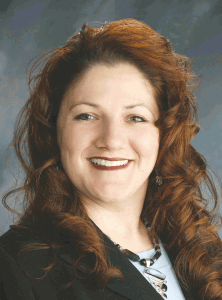



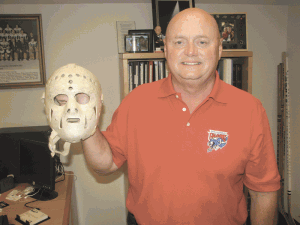
 Donald S. Holland, Esq. is the senior partner at Holland & Bonzagni, P.C., an intellectual property law firm based in Longmeadow;
Donald S. Holland, Esq. is the senior partner at Holland & Bonzagni, P.C., an intellectual property law firm based in Longmeadow; 

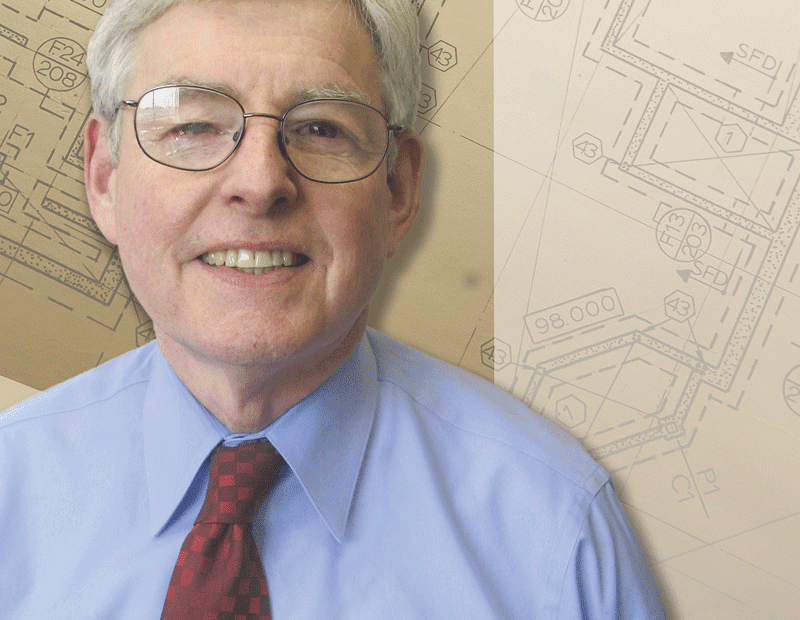


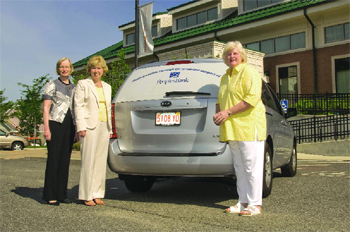
 People’s United Financial Inc. of Springfield recently named John P. (Jack) Barnes as President, CEO, and a member of the Board of Directors. Barnes was also named President, CEO, and a Director of the company’s subsidiary, People’s United Bank. Barnes has served as interim President and CEO since April.
People’s United Financial Inc. of Springfield recently named John P. (Jack) Barnes as President, CEO, and a member of the Board of Directors. Barnes was also named President, CEO, and a Director of the company’s subsidiary, People’s United Bank. Barnes has served as interim President and CEO since April. 